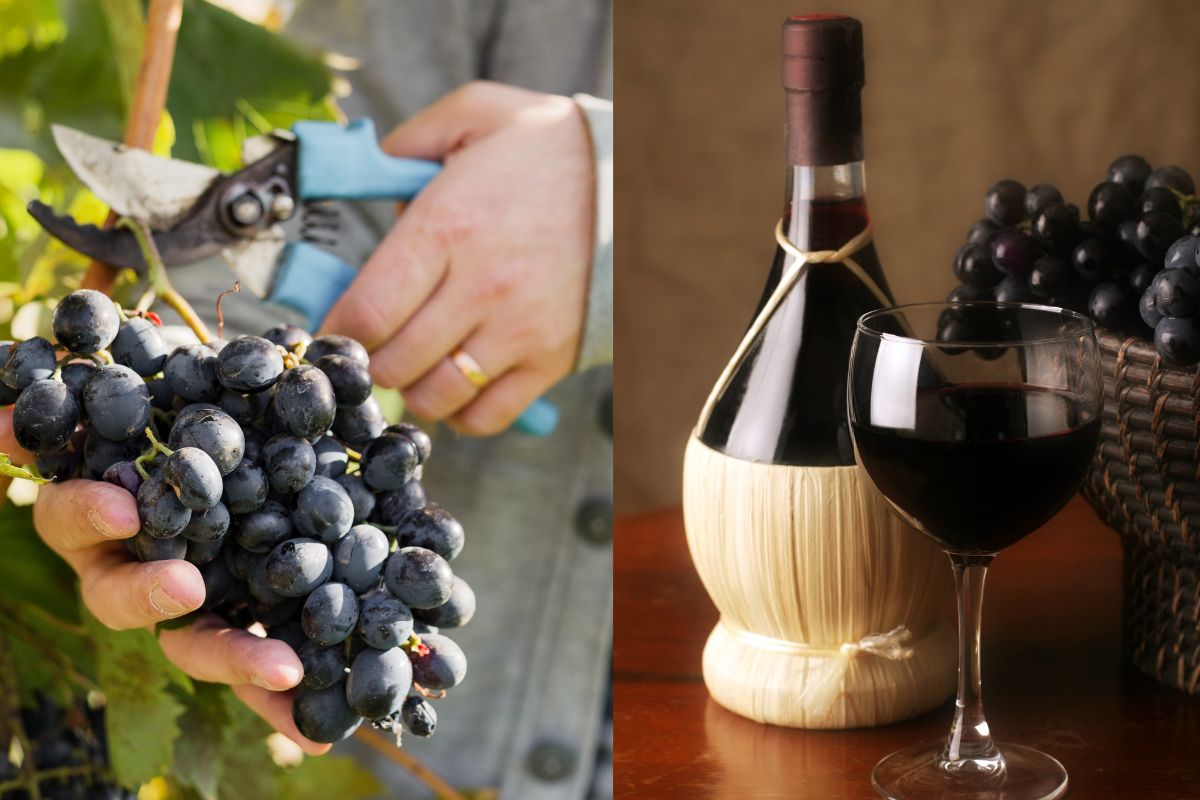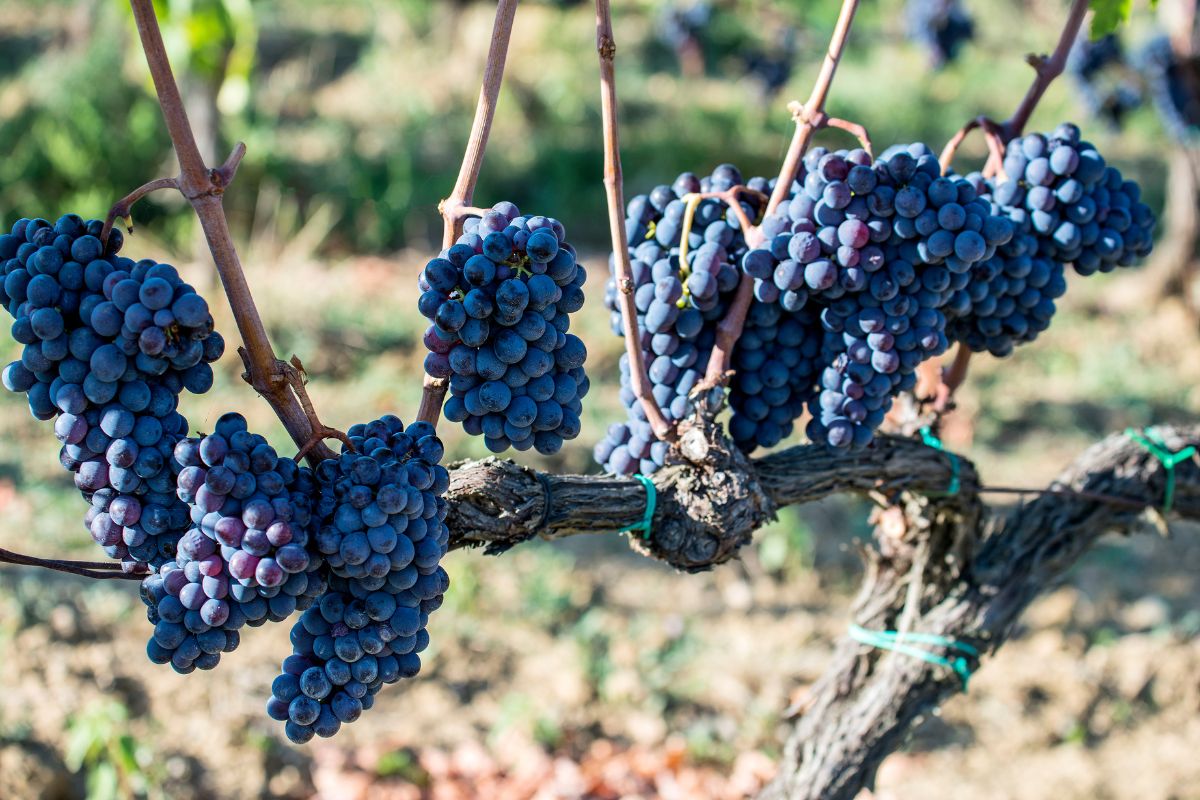Wine names can be confusing to the uninitiated and may be a source of frustration. You might know that Chianti is made from Sangiovese grapes but wonder how that is different to a Sangiovese wine.

We are going to look at Sangiovese vs Chianti to discover what’s the difference between these two wines which seem to share a common bond.
Difference Between Sangiovese & Chianti
To get straight to the point, Chianti is a region in Tuscany, Italy famous for its wine and Sangiovese is a variety of grape.
Most Chianti wine is made from the Sangiovese grape although not all Sangiovese wine is made in the region of Chianti.
A lot of wine is labeled according to the region that it comes from, think Bordeaux, while others are named for the grapes used in their creation, as in Zinfandel.
Chianti can only be made in the Chianti region while Sangiovese can be made anywhere in the world.
The tradition of naming the wine by region mostly applies to the ‘old world’ while labeling a wine by the grape variety is more common in the ‘new world’.
Both Sangiovese and Chianti are dry, medium-bodied red wines, and each of them is loved worldwide.
Sangiovese is appreciated for its high acidity and concentrated flavors of black cherry, redcurrant, and plum. It goes very well with traditional Italian food like pasta.
Chianti comes in a variety of types including Standard, Classico, Riserva and Superiore. These wines go well with dishes containing olive oil and rich meats.
Now that we know the difference between Sangiovese and Chianti, let’s take a closer look at each of them.
Understanding Grapes & Origin
Both of these wines originate in the Tuscany region of Italy with Sangiovese grapes being found in practically every red wine in the region as well as in Marches and Umbria regions.
These grapes are included in various wines in different percentages, but also found as a monovarietal and simply called Sangiovese wine.
Unlike Chianti, which can only come from that region, Sangiovese wine can be made anywhere in the world using Sangiovese grapes.
However, the Sangiovese grape is vital to the wines of Chianti and are used with other local grape varieties to produce various wonderful wines.
The grape has thin skin and is a medium to late ripening variety. Wines from these grapes have high alcohol and acidity, fruity aromas and great tannic texture.
Chianti is a blend of grapes, with 80% being the Sangiovese grape. Other varieties include Ciliegiolo, Colorino, Canaiolo and Merlot. In the past some white grapes could be used in making Chianti but as of 2006 this practice is not allowed.
In order for a wine to be labeled Chianti it has to meet certain criteria including alcohol levels and aging requirements. It is a wine known for its medium body, fruity flavors and acidity.

Flavors & Taste
Sangiovese is a dry wine with medium body and high acidity. It has fruity aromas with notes of cherry, plum and blackberry. Truffle, spice and mushroom notes can also be present.
The fruit forward notes are common in wines from warmer regions such as southern Tuscany.
With high acidity and full tannins Sangiovese is a great wine to have with meat and pasta dishes as well as with hard and semi-hard cheeses.
Chianti and Sangiovese can be quite similar in taste and flavor sharing many characteristics, but Chianti tends to be more earthy with notes of licorice and herbs.
It is also an acidic wine with notes of violet, black cherry and herbs.
The high tannic structure of Chianti gives it its dry taste. Its nose is both floral and fruity, although more mature Chianti gives an earthy aroma.
Tasting notes include dried herbs, red fruits, smoke and balsamic vinegar.
More exclusive Chiantis offer notes of espresso, balsamic reduction, sweet tobacco, sour cherries and dried oregano.
Pair Chianti with traditional Italian dishes including pizza, stews, olive oil dishes and tomato sauce dishes.
It is unsurprising that Sangiovese and Chianti share so many similarities as they come from the same grape but they each have something different to offer.
Different Types Of Chianti
There are several classifications of Chianti and each has its own characteristics, and requirements for grape varieties, aging and origin.
The most common types of Chianti are Standard Chianti, Chianti Classico, Chianti Riserva and Chianti Superiore.
Standard Chianti
This Chianti is made from a blend of at least 70% Sangiovese grapes. It is then aged for three months.
Chianti Classico
Chianti Classico is one of the most popular varieties and is more refined than the Standard type. It is made in small quantities from the best grapes in the Chianti Classico region, which is between Florence and Siena.
This Chianti has 80% Sangiovese grapes and is aged for 10 months or more.
Chianti Riserva
Chianti Riserva features softened tannins. It has to spend a minimum of two years in an oak barrel and three months aging in the bottle. Alcohol content must be at least 12%.
Chianti Superiore
Chianti Superiore is produced with grapes from outside the Classico region. It must be aged for six months in the barrel and three months in the bottle before being released.
Final Thoughts
We hope that you have enjoyed this guide to the difference between Sangiovese and Chianti wines and that you have learned something new today.
- Why Does Wine Taste Better With Age? - June 14, 2023
- What Does It Mean When A Bottle Of Wine Is Corked? - June 14, 2023
- Wine Fridge Vs Wine Cellar – Which One Should You Choose? - June 14, 2023
